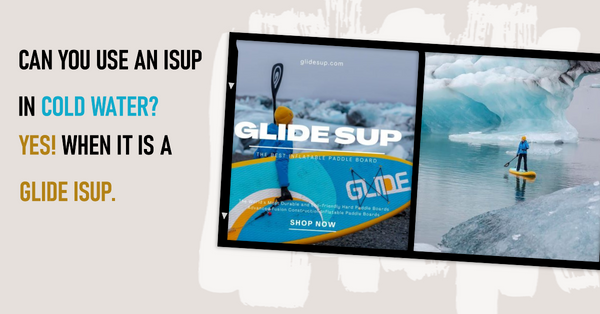
Can You Use an iSUP in Cold Water? Yes!
Diving into the crisp, cold waters doesn't mean putting your paddle board away. In fact, with an inflatable paddle board (iSUP), your adventures can stretch into the serene and tranquil beauty of winter waters. Here's how to gear up, stay safe, and make the most of cold water paddle boarding with your iSUP.
The Basics of Cold Water Paddling with iSUPs
Understanding the Cold Water Challenge
Paddle boarding in cold water, defined as temperatures below 70°F (21°C), presents unique challenges and exhilarating opportunities. The cooler conditions demand additional precautions to avoid hypothermia and ensure a safe paddling experience. iSUPs, renowned for their durability and buoyancy, are excellent companions for these adventures, provided they're properly prepared and maintained.
Effects of Cold on iSUP Performance
While iSUPs are built to endure various conditions, cold temperatures can affect their air pressure and rigidity. It's vital to monitor your board's air pressure closely, as colder water can lead to a decrease in inflation, impacting stability and maneuverability. Choosing an iSUP designed for resilience and with reliable fin systems and robust materials is crucial for cold water excursions.

Gearing Up for the Cold
The Right Apparel for Winter Paddling
Selecting appropriate attire is key to an enjoyable cold water paddle boarding session. Here’s a quick guide:
- Avoid cotton and loose-fitting clothes: They offer poor insulation and can entangle with your gear.
- Opt for wetsuits, paddle jackets, or dry suits: These provide the necessary insulation against cold water and air temperatures. Features like neoprene gaskets ensure better water protection and warmth.
Dressing for the Temperature
Your clothing choice should align with the water's temperature. For waters below 70°F (21°C), a wetsuit or dry suit is essential. In even colder conditions, below 50°F (10°C), prioritize a dry suit for its superior protection against the cold. Always consider the air temperature and wind chill factor in your attire decisions.

Paddling Safely in Winter Waters
The Benefits of Group Paddling
Paddling with others not only enhances the fun but also adds a layer of safety. Companions can offer immediate assistance in emergencies, help monitor each other for signs of hypothermia, and share the joy of discovering winter's tranquil beauty on water.
Crafting a Paddling Plan
Before setting out, outline a detailed plan including your route, expected return time, and emergency contacts. This plan should be shared with someone onshore who can alert authorities if you don’t return as scheduled. Always check the weather and water conditions to ensure they align with your planned outing.

Maintaining Your iSUP in Cold Conditions
Regular Checks and Care
Before each use, ensure your iSUP is inflated to the recommended PSI, as cold water can cause air pressure to drop. Post-paddling, rinse your gear with fresh water to remove any debris or salt, and dry thoroughly before storage to prevent mildew. Regular maintenance checks for wear and tear, especially on fins and leashes, will keep your equipment in top condition for your cold water adventures.

Embracing Cold Water Paddle Boarding
Paddle boarding in cold water is an exhilarating experience that offers unique views and a serene paddling environment. With the right preparation, gear, and safety measures, your iSUP can be your gateway to exploring the wonders of winter waters. Remember, the cold should never be a barrier to your paddle boarding adventures; with the proper approach, it can become a season of discovery and enjoyment on your iSUP.
Venture forth, paddle confidently, and let the chilly waters unveil their quiet beauty to you and your trusty inflatable companion.

